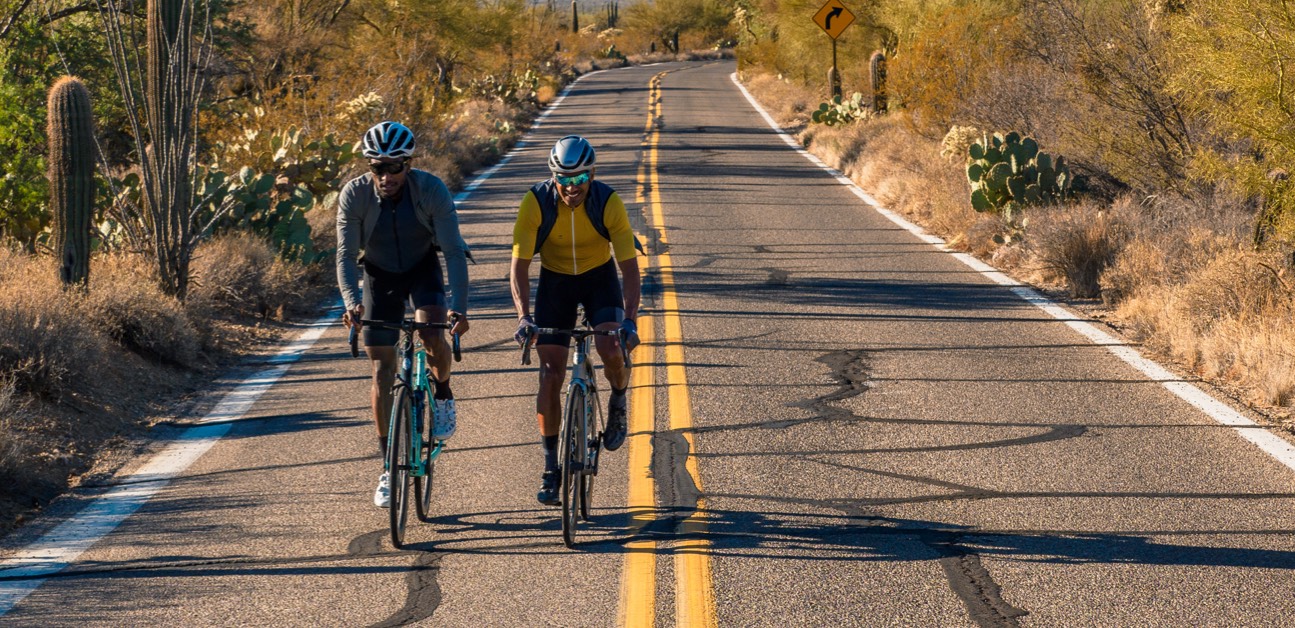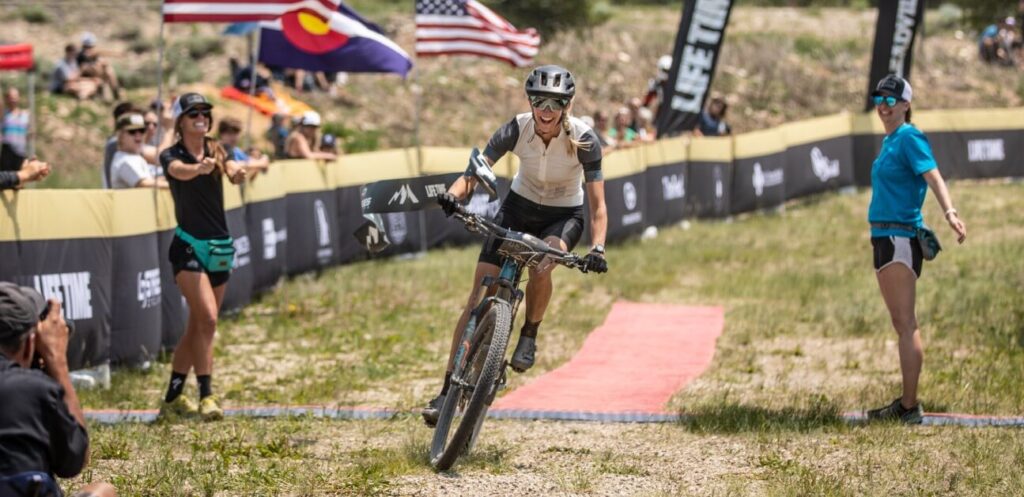Long Solo Rides: Tips for Epic Days in the Saddle

There’s a variety of things to think about when you’re preparing for a long solo ride. Whether it’s an epic time trial or an ultra-distance mass start race, you can assume you’ll be riding alone for a good bit of time. Here are five tips to help you on those long solo rides.
For more tips on long solo rides, check out Ask A Cycling Coach Ep 273.
Train Yourself To Be Great Company
Long solo rides mean that you get to spend a lot of time inside your own head, and it helps if you are great company for yourself. Wherever you go, you’re bringing your mind and mindset with you. This allows you to ask yourself, “is my head a nice place to be?”
For many athletes, this is tough. Typically, we’re hard on ourselves, and sometimes during training and racing, we are our harshest critic. Shorter workouts supply ample opportunity to train your mindset. When you’re training and in an uncomfortable spot and struggling, notice when your mindset shifts from a supportive outlook to a negative one.
Noticing these shifts is the first step to creating a better mindset. Once you spot the mental shift, you can catch the negative thoughts and start thinking of some positive self-affirmations. A great practice is to talk to yourself just like you would to a friend if they were struggling.
A negative mindset will offer little help when you’re 150 miles into a race. Luckily you can counter this by reinforcing good practices on shorter rides. No doubt, this takes a great deal of mental focus and energy, so it doesn’t have to be a constant thing on your mind. Feel free to let your mind wander when it’s safe to do so, and save the focus for the critical moments in your race.
Create a Pacing Plan
Long solo rides are all about energy management. This is especially important for long races or a time trial. By creating a pacing plan, you’ll have a strategy to optimize your energy expenditure. If you pace correctly, you’ll finish with just the right amount of energy left in the tank.
The first step is to look at the course for general features like distance and total elevation gain. Once you have a general idea of the ride, take a closer look at the route to break it into key sections or landmarks. Note how long and how far apart the prominent climbs are. Not only does this help you decide where to expend an effort or recovery, but it will help you “chunk” the ride into more manageable sections. Just knowing what’s coming up and when it ends can provide massive mental relief.
Building a Pacing Plan for Long Rides
Creating a pacing plan is straightforward and involves a few key cycling metrics like Normalized Power and Intensity Factor. Check out How to Build A Pacing Plan For Long Events for a step-by-step guide.
Stick to Your Nutrition Plan
Epically long days in the saddle require lots of nutrition. Creating and then sticking to a nutrition plan will pay off massively. You can get a general idea of your nutritional needs from your pacing plan. Finding your energy expenditure in kilojoules (kJs) is simple. Just multiply your planned average wattage by time in seconds, then divide by 1000. You can estimate your total time to get an approximate number to shoot for.
Next, you’ll need to decide what and when you’re going to eat and drink. Hydration needs can vary significantly based on weather conditions, so make sure to check the forecast. To help you stick to your plan, set an alarm on your phone or head unit reminding you to eat and drink and never ignore hunger or thirst cues from your body.
More On Nutrition
That said, many athletes have fallen into the trap of fueling solely by feel following the adage eat when you’re hungry and drink when you’re thirsty. There’s a good bit of truth in that. The problem arises when race nerves and adrenaline pumping can cause you to feel fine for the first few hours. But all the while, you’re digging yourself into an energy deficit. For long events, it’s helpful to learn to eat before hunger. If you wait until your hungry, it’s often too late.
On the other side, it’s beneficial to learn the emotional cues that stem from under-fueling. They are often difficult to recognize, but one sign that you’re under-fueled is your mental state. If you’re struggling mentally and your inner critic is raging, it may be time for some food.
Bring Some Different Food
If you struggle with eating enough, a good strategy is to bring something different from the typical sports nutrition. Let’s face it, gels and chew aren’t the most appetizing snacks for many of us. Carrying a bit of unique or appealing food can not only help fight palette fatigue but provide a small incentive to eat more. For many, that something salty or a food with a different texture. Whatever you pick, make sure it’s something you’ve tried on a previous ride. It’s also probably best to avoid foods that contain a lot of fat to avoid additional GI distress.
Things to Bring on a Long Ride
- More food than you plan for
- Some cash or a credit card—helpful for if you have to stop at a store
- During COVID, a facemask for those store stops
- Extra packets of chamois cream and sunscreen
- A way to filter water—great for those rides that are really out there
- A small first aid kit
- Cellphone
Keep a Level Head
Long solo rides mean that there will be plenty of ebbs and flows, ups and downs. By the sheer scale of the event, there’s a greater chance of something going wrong. Flats, bonks, and pain are just part of the deal. It’s helpful to remember that no matter how you feel, it will pass. If you feel great, it will pass. And if you feel terrible, it’s going to pass.
It’s an odd sensation, but it happens with these types of long rides. You can go from feeling great to wanting to quit to feeling great again in the stretch of an hour. Whether it’s due to physiological or mental reasons, try your best to keep a level head no matter what happens. One way to practice keeping a level head is to visualize some of the problems you might run into—like a flat tire or mechanical. But don’t stop there. Visualize the solution and your positive response as well.
While the increased possibility of setbacks on long rides sounds daunting, the good news is that you’ve got more buffer for when they do happen. So if you have a mechanical and need to stop for a while, you still have ample opportunities to gain that time back. In a long race, everyone is going to experience the same ups and downs. What makes the difference is how you react to them.
